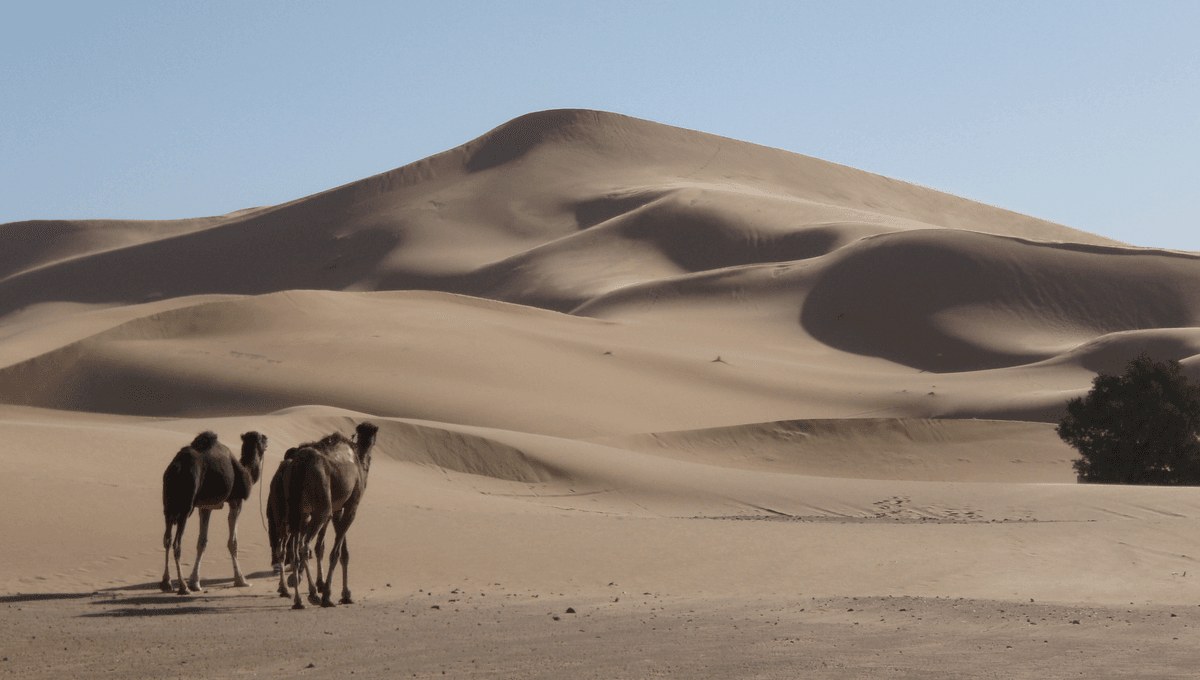
A mighty Saharan Sand Dune has been found to have a 13,000-year-old base, but most of its current height grew within the last 1,000 years. The information transforms the way geologists think about star dunes, the tallest class category of sand dunes. Since star dunes are found not only in the deserts of Africa, Asia, and North America, but on Mars and Titan too, the work could have wide applications. It also explains why geological searches seldom find signs of them in the past.
When people who’ve never been to one imagine deserts, star dunes – named for the way their arms stretch outward when seen from above – might be what comes to mind. Although they cover only a small proportion of the world’s deserts, they are photogenic enough to get filmed a lot when directors want to convey morale-sapping treks. Some in China are 300 meters (1,000 feet) high, possibly the largest sand dunes on Earth.
To form something that big has been thought to take a long time, but ancient records of deserts preserved as rocks don’t reveal clues to star dunes’ past, aside from a Triassic example, when dinosaurs were young. Professor Geoff Duller of Aberystwyth University and Professor Charlie Bristow of Birkbeck University went to the Moroccan star dune Lala Lallia to seek answers.
Meaning “highest sacred point” in Berber, Lala Lallia is 100 meters (330 feet) high and around 700 meters (2,300 feet wide) and located in part of southeastern Morocco that film crews flock to when they want a forbidding-looking desert.
“Using ground penetrating radar to look inside this star dune has allowed us to show how these immense dunes form, and to develop a new model so geologists know better what to look for in the rock record to identify these amazing desert features,” Bristow in a statement. The team also used luminescence dating, which reveals the last time certain minerals were exposed to sunlight.
These approaches revealed a dune that got started during the Younger Dryas event, when the Earth briefly plunged back into an ice age after having spent thousands of years digging its way out.
During the Younger Dryas, northerly winds produced Lala Lallia’s 30-meter (100-foot) high base. The dune then stopped growing for at least 8,000 of the next 12,000 years. During this time evidence of fulgurites, plants, and pottery shards accumulated on the east side of the dune. This indicates the climate was wet enough that vegetation could stabilize dunes in the area, filling in a gap in our knowledge of the climate of the area at the time.
When growth resumed it was initially slow, but in the last 900 years Lala Lallia added some 70 meters to its height and migrated rapidly (by the standards of geology) west. The arms that are the distinctive feature of star dunes are mostly younger than the main body, in one case just 15 years old.
Using this data the team were able to piece together the dominant wind direction in the area at different times since shortly after the last Ice Age.
The pair were as interested in what their findings could tell them about other dunes, and their apparent absences, as this specific example.
“This research is really the case of the missing sand dune – it had been a mystery why we could not see them in the geological record. It’s only because of new technology that we can now start to uncover their secrets,” Duller said. “These findings will probably surprise a lot of people as we can see how quickly this enormous dune formed, and that it is moving across the desert at about 50 cm [20 inches] a year.”
The authors think ancient star dunes that have turned to rock have been misclassified as having once been linear or barchanoid dunes, which look different when at the surface, but probably quite similar once buried. They think their work will help differentiate the sedimentary structures star dunes become from the remnants of their counterparts, hopefully reconciling their absence in the record.
The study is published open access in Scientific Reports.
Source Link: Why The World’s Tallest Sand Dunes Aren’t In The Geological Record